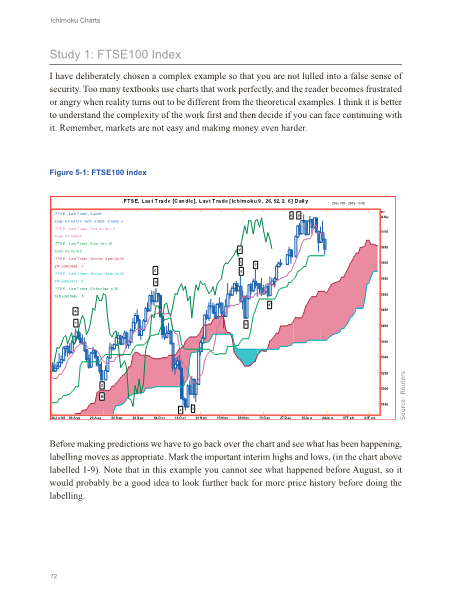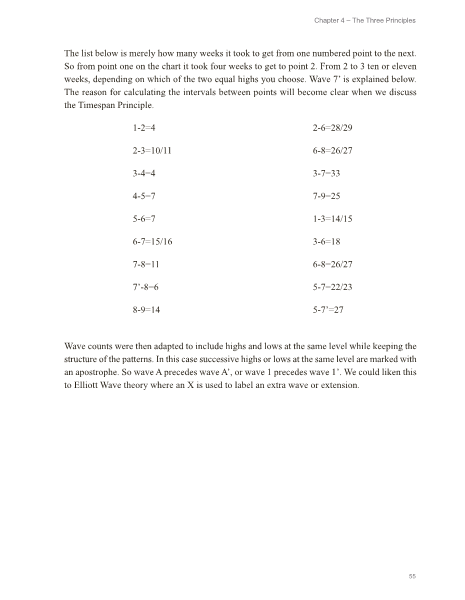Ichimoku Charts An Introduction to Ichimoku Kinko Clouds Harriman Trading Nicole Elliott Libros en
Post on: 3 Апрель, 2015 No Comment

Los clientes que compraron este producto también compraron
Android
Windows Phone
Para conseguir la app gratuita, introduce tu dirección de correo electrónico o tu número de móvil.
Opiniones de clientes más útiles en Amazon.com (beta)
18 de 20 personas piensan que la opinión es útil
Real Dissapointment 13 de marzo de 2009
Por Mark Schwartz — Publicado en Amazon.com
Formato: Tapa blanda
Where is Steve Nison when you need him??
Nicole Elliot’s book on Ichimoku Charts (aka Cloud Charts) completely fails at methodically building up the reader’s knowledge of the theory, practical application, and utility of each component of the chart. Without a thorough grounding in the building blocks of Cloud charts it becomes impossible to interpret these charts and extract their value.
I was drawn to Cloud charts because of my great desire to find a chart that would incorporate extremely powerful Japanese Candle Stick analysis, but also supposedly have built in moving averages and even make use of Fibonacci number sequences. The former combination seems like it would make for a robust technical tool if only it could be explained / decoded using a modicum of plain english.
As someone who developed a real passion for technical analysis from reading the extremely well written works of Steve Nison and John Murphy, Nicole Elliot’s book completely fails to transmit any meaningful knowledge of Cloud charts to the reader.
I don’t even think the books title is appropriate as one could get the same depth of Nicole Elliot’s introduction or pamphlet on Ichimoku charts through a Google search of free articles on the web.
I still believe these charts hold real promise if the right author comes along to unlock their value for interested readers.
9 de 9 personas piensan que la opinión es útil
Fine book, but only for professionals 15 de septiembre de 2010
Por M. Chiz — Publicado en Amazon.com
Formato: Tapa blanda Compra verificada
I bought this book after being disappointed with Manesh Patel’s book on the subject: Trading with Ichimoku Clouds: The Essential Guide to Ichimoku Kinko Hyo Technical Analysis (Wiley Trading). See my review there for an overview of Ichimoku Clouds.
Elliott’s book is much better, but it is not for everyone. This book is written for a very specific audience — professional technical analysts who want to understand what their Japanese competitors are doing. If that’s your situation, this is the book for you; otherwise look elsewhere.

Because of the book’s intended audience, it has almost no discussion of trading. It simply discusses the indicator and how a Japanese analyst would interpret it. If you work at the forex desk of a bank, this information will help. If you are the typical trader, it won’t.
Regrettably, there are no truly outstanding English books on the subject. If you can read Japanese or work with someone who does, you should just get Hidenobu Sasaki’s Ichimoku Kinko Studies (Toshi Raider Publishing 1996). Otherwise, as of 2010, this seems to be the best book on the subject available.
I’ll provide a brief overview of the book’s contents for those considering it:
After a brief historical overview in Chapter 1, the book spends Chapter 2 explaining how the charts are constructed. The information available on the internet is probably better, but one important difference this chapter brings out is that the Tenkan-sen and Kijun-sen lines are constructed as moving averages of daily midpoints (halfway between the daily high and low). Most websites and other books will tell you to construct them like you construct the Senkou Span — by taking the midpoint between the highest high and lowest low over the look-back period.
Chapter 3 covers the conventional Japanese interpretations of the cloud chart, leaving out newer approaches Westerners have added. Although you could get this information from many internet sites, it will generally not be clear which methods are the typical Japanese ones and which ones are more recent innovations. The book here stays on point and focuses on explaining how a Japanese analyst will look at the chart.
Chapter 4 is probably the most important and most useful chapter of the book. Unfortunately, it is somewhat lacking in detail. This chapter covers the Wave, Price, and Time principles. These principles are the Japanese versions of wave analysis, price projections, and time retracements. The coverage here is substantially better than anything I’ve found elsewhere, but the level of detail is only enough to understand what a Japanese analyst would do. I don’t feel confident that I could actively use these methods with just the information in this chapter.
Chapter 5 provides six longish examples of performing a technical analysis using Ichimoku techniques. Sticking with the book’s goal of teaching you how a Japanese analyst would approach a chart, each example is a single snapshot. The book does not show you how things turned out nor does it show you how an analysis would be changed after new bars were added.
Chapter 6 builds on Chapter 5 and focuses on analysis of volatility for option strategies. This chapter contains information that isn’t available elsewhere, but outside of a handful of professionals, I can’t see it being generally useful. Very few retail traders use vanilla options in spread strategies; even fewer will make use of the exotic knock-in/knock-out options that Elliot references in several examples.
9 de 10 personas piensan que la opinión es útil
A good intruduction 5 de junio de 2008
Por Atahualpa — Publicado en Amazon.com














